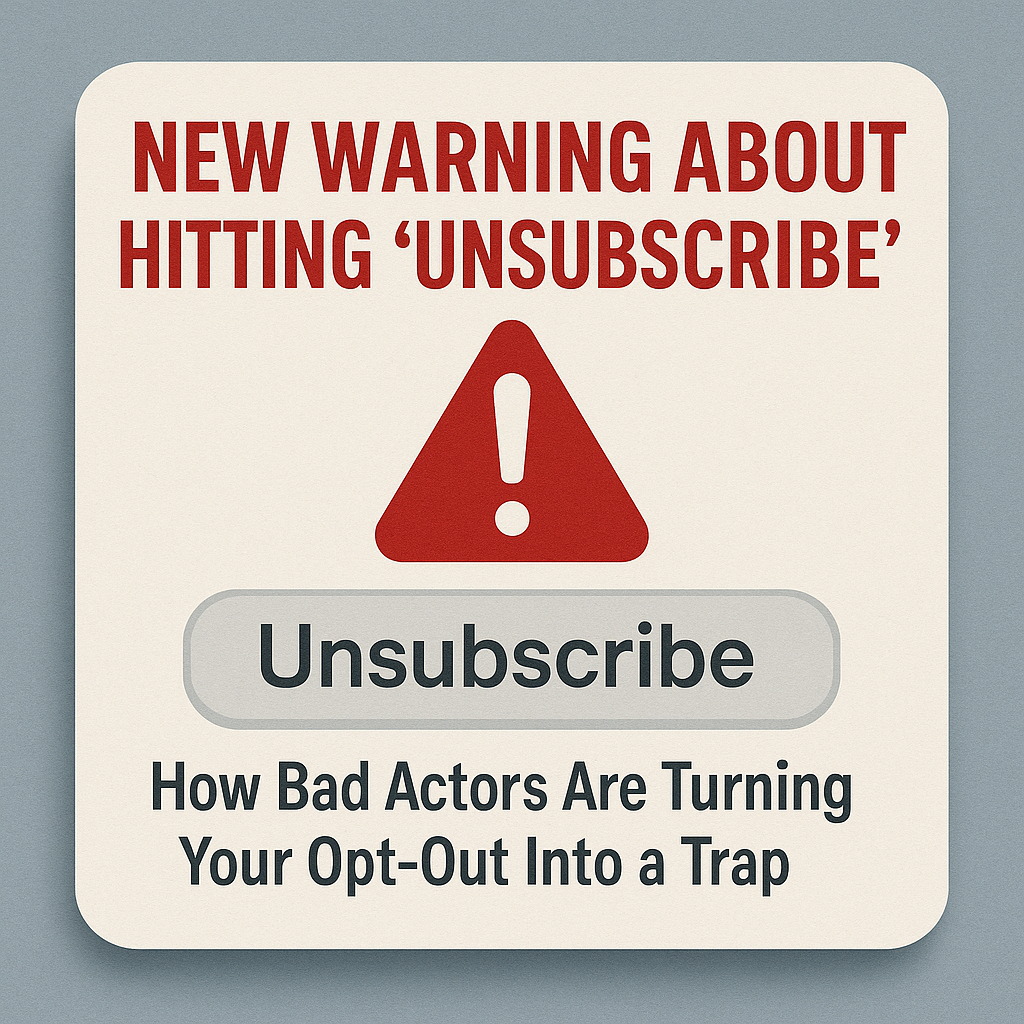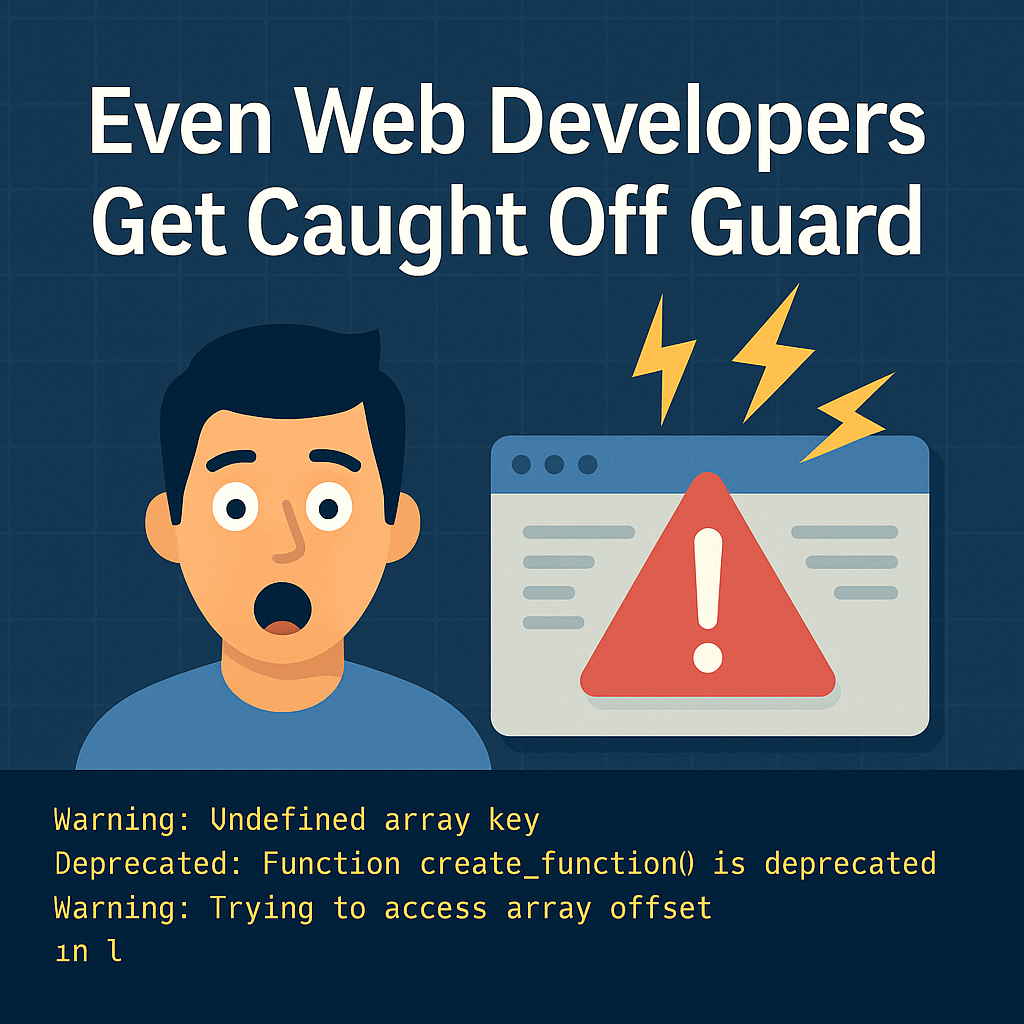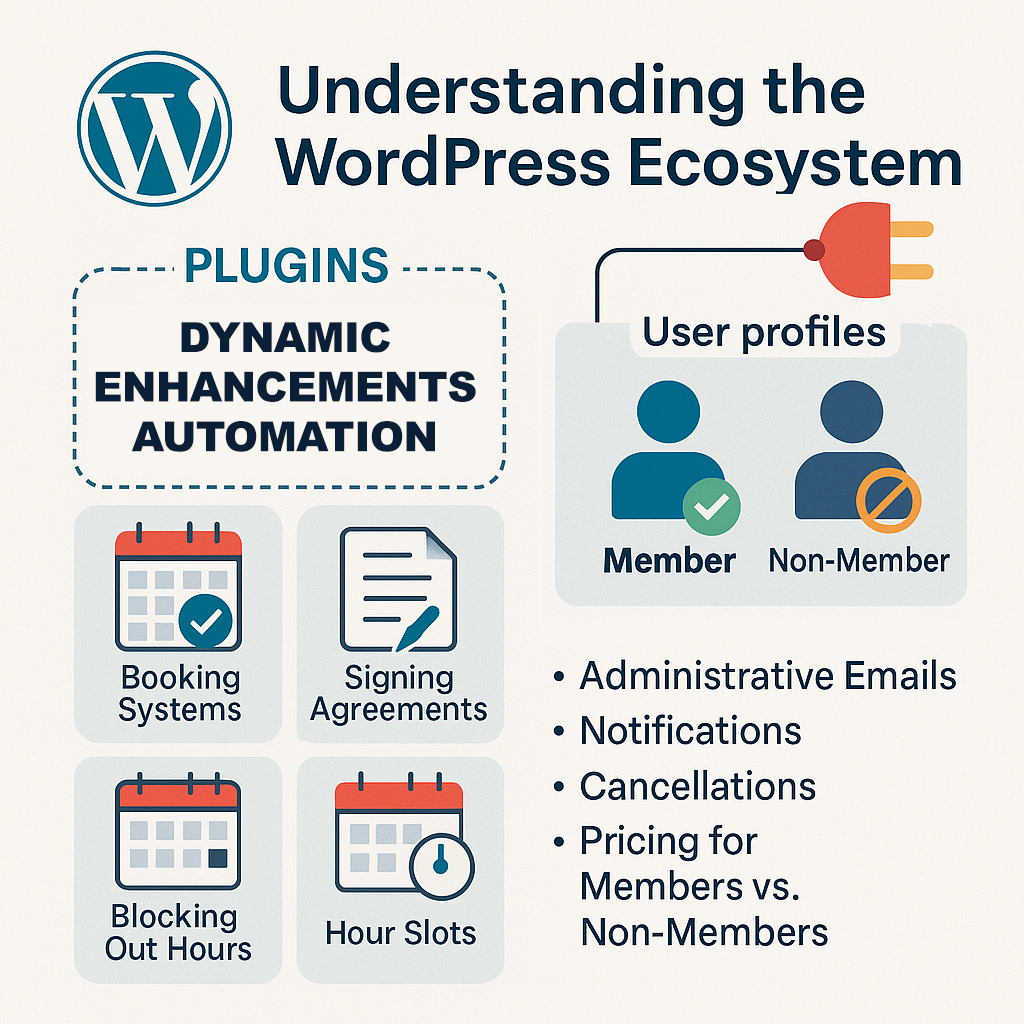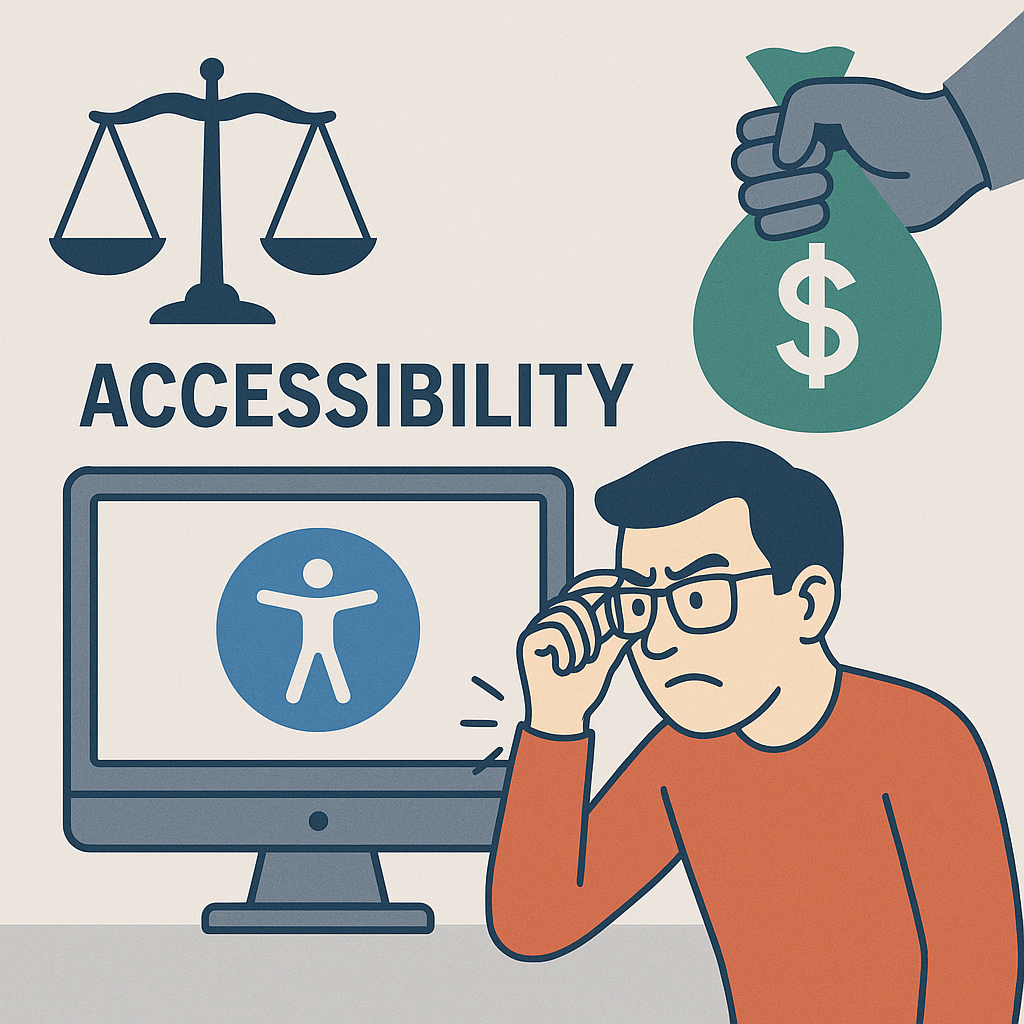The Rise of Unsolicited Emails in the Digital Age
In our hyper-connected world, email remains a vital communication tool. From personal correspondence and business transactions to promotions and newsletters, it’s our daily digital mailbox. But as useful as email is, it’s also a prime target for abuse.
One of the most frustrating forms of this abuse is unsolicited email — commonly referred to as spam. While most of us have learned to ignore these emails, many still attempt to deal with them by clicking the “Unsubscribe” link at the bottom of the message. Unfortunately, a growing body of cybersecurity evidence warns that clicking “Unsubscribe” could be doing more harm than good.
Let’s take a deep dive into why that is — and what a safer, smarter alternative looks like.
The Unsubscribe Illusion: When Clicking Makes Things Worse
For years, cybersecurity experts encouraged users to not engage with spam. The logic was straightforward: responding, clicking, or otherwise interacting with a spam email confirmed your address was active and monitored. This valuable information could then be sold to other spammers, increasing the flow of junk mail — or worse, phishing attempts and malware-laden messages.
Unfortunately, as the arms race between spammers and cybersecurity evolves, so too do the tricks. Today’s warnings go further: clicking an ‘Unsubscribe’ link in a malicious or unsolicited email may directly lead to exploitation.
Here’s how:
1. Unsubscribe Links Are No Longer Just Links
While many unsubscribe links are legitimate and comply with laws like the CAN-SPAM Act, cybercriminals have learned to imitate them. What appears to be a simple unsubscribe function may, in fact, be a carefully disguised malicious link.
By clicking it, you may:
-
Download malware or spyware onto your device.
-
Be redirected to phishing sites.
-
Be prompted to enter personal information.
-
Trigger tracking scripts that log your IP address and device info.
-
Confirm to the spammer that you read the email, encouraging more targeted spam.
What’s worse, this all happens under the guise of removing you from a list you never asked to be on in the first place.
2. You’re Confirming You Exist — And That You’re Engaged
One of the most valuable pieces of information in the spammer’s toolkit is knowing that a real human being is behind an email address. When you click anything in a spam email — even just opening it with images turned on — you confirm you’re a live target.
Once confirmed, your email address is even more valuable. Spammers may:
-
Sell your address to other scammers.
-
Use it to test phishing campaigns.
-
Attempt further social engineering attacks.
The intent is not always to advertise — sometimes it’s to steal.
3. Fake Unsubscribes Lead to Data Harvesting
In some cases, clicking an “unsubscribe” link brings you to a website that asks you to “confirm your email” or fill out a short survey to explain why you’re leaving. The language may seem benign, even courteous. But in truth, this is a front for data harvesting.
Unsuspecting users may enter:
-
Their name
-
Their email address (again)
-
Their company or job title
-
Even passwords (if asked to “verify account ownership”)
Each field filled out makes the scam more effective — and you more vulnerable.
4. Compromised Devices and Identity Theft
In more advanced attacks, just clicking a fake unsubscribe link can initiate drive-by downloads, which are malicious scripts that exploit vulnerabilities in your browser or device software to install malware without your knowledge.
Once infected, your device may:
-
Become part of a botnet.
-
Begin transmitting sensitive data to hackers.
-
Serve as a staging point for attacks on your workplace or financial accounts.
This isn’t just annoying anymore — it’s potentially devastating.
Why This Threat Is Escalating Now
Cybersecurity analysts report that email-based attacks are surging in 2025. While phishing scams remain dominant, the use of psychological manipulation — like falsely offering control via an “unsubscribe” link — is becoming more common.
This rise is due in part to:
-
Increased AI usage in spam generation, making emails more believable.
-
Higher value in personal data, which can be sold, used for identity theft, or even political manipulation.
-
Over-reliance on email by consumers and businesses, creating a larger attack surface.
Legal Loopholes and Lax Enforcement
Although many countries have laws requiring senders to honor unsubscribe requests (such as the CAN-SPAM Act in the U.S. or GDPR in the EU), enforcement is difficult, especially when:
-
The email originates from overseas.
-
The sender uses spoofed addresses or burner domains.
-
The recipient cannot verify if the unsubscribe process is real or fake.
Even legitimate companies have been criticized for making unsubscribing a convoluted process that still results in delayed or continued emails. This gray area makes it harder for users to know when it’s safe to click — and when it’s not.
The Safer Alternative: Email Filters as a First Line of Defense
So if hitting “unsubscribe” is risky, what should you do instead?
The answer is surprisingly simple: create email filters.
Instead of interacting with the unwanted message at all, use your email service’s built-in filtering tools to:
-
Identify repeat offenders or domain names.
-
Automatically mark them as spam.
-
Delete them upon arrival.
This “silent treatment” is far safer — and far more effective — than clicking any link.
Here’s how to do it:
Creating Email Filters in Popular Services
Gmail
-
Open the unwanted email (without clicking links).
-
Click the three dots in the top-right corner.
-
Select “Filter messages like this.”
-
Choose to filter by the sender, subject line, or other criteria.
-
Click “Create filter.”
-
Choose to delete it, mark as spam, or skip the inbox.
Outlook (Microsoft)
-
Right-click on the email.
-
Select “Rules” > “Create Rule.”
-
Define the conditions (e.g., sender or subject).
-
Choose “Delete” or “Move to Junk.”
Apple Mail
-
Go to Mail > Preferences > Rules.
-
Click Add Rule.
-
Name your rule and set conditions.
-
Set the action to “Delete message” or “Move to Junk.”
Yahoo Mail
-
Click the gear icon > More Settings.
-
Go to Filters.
-
Click Add new filters.
-
Set conditions and choose “Trash” as the destination.
Why Filters Work
-
No interaction means no chance of being tracked or tricked.
-
Fully automatic process means you don’t have to deal with the emails ever again.
-
Scales easily — add more filters as needed.
-
Data stays private — you’re not confirming your existence to spammers.
Best Practices to Avoid Being Targeted
-
Don’t display your email publicly on websites or forums.
-
Use disposable email addresses for one-time signups.
-
Turn off automatic image loading in your email client.
-
Report phishing using built-in tools in your email platform.
-
Keep your devices and browsers updated to avoid drive-by attacks.
-
Use a reputable spam-blocking service or email gateway if you’re managing business emails.
In Summary: Never Trust Unsubscribe Buttons on Spam
The “Unsubscribe” link, once a beacon of relief in a crowded inbox, is now a wolf in sheep’s clothing. While legitimate marketers offer real opt-outs, the rise of spoofed links, malicious redirects, and data harvesting means the safest move is no move at all.
Instead, take back control of your inbox with email filters that eliminate the junk — without the risk. Think of it as digital judo: instead of fighting back directly, you redirect the attacker’s momentum into a safe, automated defense.
Because when it comes to digital safety, sometimes silence really is the smartest response.
Sources:
-
Federal Trade Commission (FTC): CAN-SPAM Act Compliance
-
Wired Magazine: “Why Clicking Unsubscribe Can Make Spam Worse”
-
Norton LifeLock: “How Spammers Trick You with Unsubscribe Links”
-
Cybersecurity & Infrastructure Security Agency (CISA): Phishing Guidance
-
Kaspersky Labs: “Fake unsubscribe links now the preferred tool of phishers”
What inspired this article: Today.com video article “Inside look at the dangers of unsubscribing from unwanted emails”
Google search for more articles on the subject: Click here.
Disclaimer:
3GEES Media is not affiliated with, endorsed by, or sponsored by any of the companies, brands, or organizations mentioned in this content. All references and external links are provided for informational purposes only and are offered “as is.” 3GEES Media makes no representations or warranties regarding the accuracy, reliability, or security of any third-party content or websites. Use discretion when clicking on external links.
*If these links expire or become unaccessible, please let us know so that we can correct them.
*The majority of this article was researched using AI Tools. The editorial content was written by myself and corrected by AI Tools and combined with the instructions for ‘filtering’ by AI Tools.





